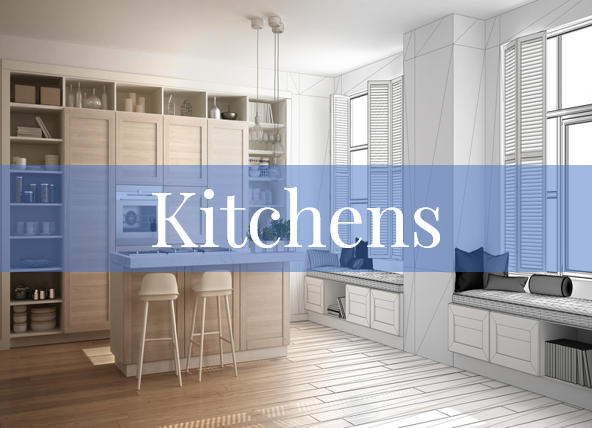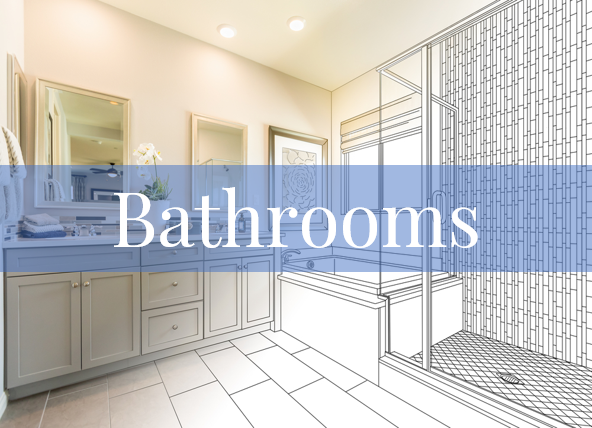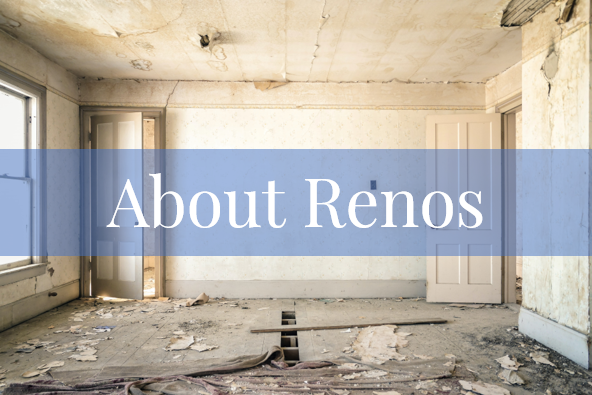The Luxury of a Heated Floor: Is It Worth It?
/Adding a heated floor is one of our most requested luxuries during retrofit renovations. Heated floors aren't just for bathrooms anymore. We've been asked to add them to kitchens, basements, bedrooms over garages, and laundry rooms as well. We'll talk about the benefits and disadvantages of heated floors, types of floor heat, and why you should consider it for your next project.
A warm floor is luxurious comfort on your feet, no matter what climate you live in. It's like standing in a ray of sunshine to warm your soul. Our clients love heated floors anywhere they want to consider tiling the floors. Not only do our clients love the luxury, but their pets also adore lying on heated floors.
Prefer to listen?
How it Works
Conventional heating, such as gas furnaces, warms the air through the supply air vents in your home. Depending on how far away from the vent you are, it will determine how warm you feel. Floor heating warms the people and objects in a room directly. The air around you can be cool, but you will still feel the warmth through your feet.
Floor heat can be accomplished in two ways: hydronic floor heat, which is a hot water-based system, and electric floor heat. Radiant floor heat is most often utilized in new home construction. It's also mostly used as a primary heat source throughout an entire home. Hyrdronic systems use hot water, which is pumped through plastic tubing beneath the floor. It also requires a boiler, a pump, and a gas line.
Electric floor heating uses cables that are woven in a pattern beneath the floor's surface. Whether you opt for radiant or electric floor heat, both systems provide uniform heating in the room.
Typically, electric floor heat takes about 30–60 minutes to reach the temperature you have set. Because they usually come with a programmable thermostat, it allows you to set the floor heat to turn on about an hour before you plan to wake up, so the floor will be toasty warm when you want it. If your whole house is heated by radiant heat, this allows you to easily control the temperature for energy and cost savings.
Safety Measures
With electric floor heating, one thing you want to make sure of is that an electrical permit is taken out when the work is being completed. Even if you are handy and want to do it yourself, make sure you take out an electrical permit, which will also include an electrical inspection.
An electrical contractor had installed a heated bathroom floor in a Niagara-on-the-Lake home. An elderly man fell on that floor on April 5, 2014, according to a release from Ontario's Electrical Safety Authority (ESA). He suffered second- and third-degree burns to his body and died from his injuries weeks later. It wasn't long after this incident that the ESA made it law that all electric floor heat installations required an ESA inspection.
Did you know?
Did you know that radiant heat dates back to ancient times? The Romans ran the flues from the fires under elevated marble floors to keep their feet warm. This was particularly done in the Roman bath houses.
Centuries later, Frank Lloyd Wright, an American architect, buried copper pipes in the floors of his home and warmed them with hot water. Eventually the pipes corroded, which is why plastic PEX pipe is now used.
Pros of Electric Floor Heat
Easy to install and can be done as a DIY
Ideal for small areas and rooms
More affordable up front than hydronic floor heat
Great for use under tile or natural stone
Requires little to no maintenance once installed
Pros of Hydronic Floor Heat
Great to heat larger areas, particularly whole homes
Can last for decades with proper maintenance
Cons of Electrical Floor Heat
Designed for smaller areas such as bathrooms, kitchens, etc. (not typically used for whole house installations)
Although inexpensive to operate, it is expensive to install professionally. Even the materials alone are quite costly
Cons of Hydronic Floor Heat
Takes longer to heat up—it can take as long as 2 hours
Installation is complex and much more expensive than electric floor heat (not a DIY project)
The boiler and associated equipment require regular upkeep
Benefits of a Heated Floor
I love a heated floor, so I might be a bit biased, but who can resist waking up on a cold winter morning and stepping on a warm, cozy floor in your bathroom? Better yet, go to the kitchen to put on the coffee, and the first thing you feel is toasty toes and a wonderfully warmed room. It's a luxury worth every penny if you love the warmth. Let's look at some of the benefits overall.
Uniform heating: Forced air heating systems distribute warm air through a room, whereas a heated floor heats the entire floor, which leads to an evenly heated room. You won't feel cold drafts and will feel more comfortable at a lower ambient temperature.
Little to no maintenance for electric radiant floor heat: Most floor heat systems provide a 20-25 year warranty on their product and require no maintenance.
Noise-free: Depending on the room in the house, furnaces can create unwanted noise when operational. Floor heating is completely noise-free.
Energy Efficient: In general, radiant floor heat is considered 20–25% more energy efficient than forced air heating. This translates into long-term cost savings for you.
Pets love them too! We've even had some of our clients deliberately install a heated kitchen floor just so their dog with arthritis would have a comfortable (and comforting) place to lay.
Increase your home's value: Heated floors will typically increase the value of your home and most certainly increase its appeal to potential buyers, particularly luxury-seeking baby boomers and millenials.
Disadvantages of a Heated Floor
Replace your flooring: Because radiant heat is installed under flooring, you will need to rip out the existing flooring and install new. Tile is the best choice because it conducts heat extremely well. Hardwood, laminate, and vinyl plank will often work as well (as long as you have a good-quality product), but they don't conduct heat as well, so they take longer to warm up.
Elevates your floor: Because radiant heat is installed on top of a subfloor, you will be adding 1/2" to 1" to the height of your floor. It's not much of an issue, but it may mean you need to cut down your doors slightly.
Cost: The initial cost can be high, but the overall benefits, including cost savings and energy efficiency, usually outweigh the cost.
In summary...
If you're thinking about installing floor heat in your home, remember the following:
Work with a licensed team that has experience installing heated floors
Choose the right flooring materials to optimize heating consistency while minimizing energy consumption
Install a programmable thermostat
The team here at Multi Trade Building Services has designed and built bathrooms, kitchens, laundry rooms, and basements with heated floors in Durham Region for 30+ years and counting. Contact us to schedule a consultation, learn more about heated flooring, and decide whether it’s a good choice for your upcoming renovation.
















